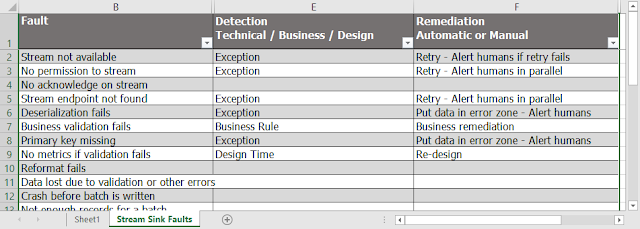Failure Modes Effects Analysis - FMEA - Step Two - Detection and Remediation

We evaluate the identified possible faults and issues to determine how we can detect the failure and how we can remediate it. For this discussion, we will bucket the failure modes into three types which can help us determine how they can be detected. We will categorize failures as technical, design time and business types of failures. We can use the category to determine how we wish to remediate the failures. Some of the business rule failures will be "by policy" and their remediation will be in the business departments. The other failures will be remediated via technical means. Capturing - Detection and Remediation We want to fill in the Detection and Remediation columns. You can tune the meanings of these columns to your use case. For this walkthrough We sweep across all the faults to determine how the fault would actually be detected and then how we would permanently, tactically, manually, transiently remediate that....

